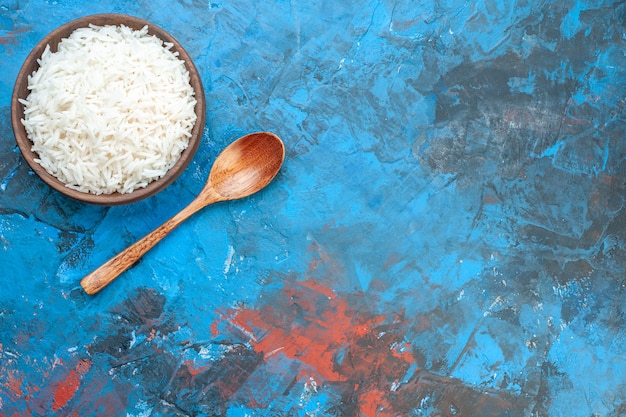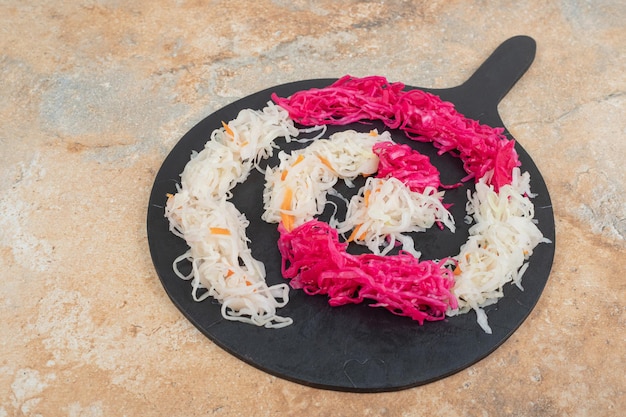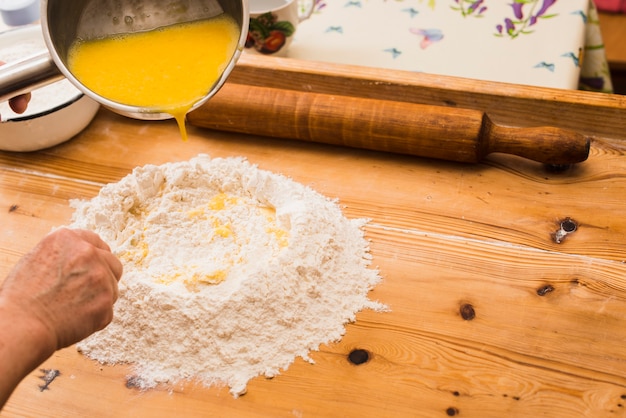Ah, basmati rice. The mere mention of those words conjures up images of fragrant, fluffy grains, the perfect accompaniment to a rich curry or a vibrant stir-fry. But let’s be honest, sometimes even the most seasoned cooks struggle to get it just right. That’s where I come in! Having spent years perfecting my rice-cooking skills (with many a disastrous attempt along the way!), I’m here to share my secrets and help you achieve that perfect, fluffy, aromatic rice every time.
(Part 1) choosing the right rice: The Foundation of Perfection

You can’t expect to cook a stellar dish of rice if you’re not starting with the right ingredients. And when it comes to basmati rice, quality really matters. Think of it like this: just as you wouldn’t use the cheapest, most generic flour for your sourdough bread, you wouldn’t want to use just any old basmati rice for your meals.
The Search for the Perfect Grain
When you’re in the supermarket, look for long-grain basmati rice, preferably from a reputable brand. The ideal grain is long, slender, and has a distinct aroma. You should be able to tell it’s basmati just by giving it a good sniff! Avoid those cheaper, shorter-grain varieties that tend to clump together and lack the exquisite flavour and texture of true basmati. Trust me, the difference is noticeable!
Why Basmati Reigns Supreme
But why all the fuss about basmati? Well, it’s not just a fancy name. Basmati rice, grown in the foothills of the Himalayas, is renowned for its unique flavour and aroma. Those long, slender grains cook up light and fluffy, making it perfect for absorbing the flavours of your sauces and spices. It’s also known for its low glycemic index, making it a healthier choice than some other rice varieties.
Checking for Quality: A Quick Inspection
Once you've got your bag of rice, don't just throw it in your basket. Take a moment to examine it. Look for rice that's clean and free of debris. You should be able to see the individual grains clearly, and they should be a consistent ivory colour. Give it another sniff – that distinct aroma is a sign of freshness. If you're unsure, don't hesitate to ask the shop assistant for their recommendation. They'll often be able to guide you towards the best quality rice for your needs.
(Part 2) Rinsing Rice: A Simple but Crucial Step

Now, onto the first step in cooking perfect basmati rice – rinsing it. You might be thinking, "Why bother? It's just rice!" But believe me, rinsing is absolutely essential. It’s the secret to fluffy rice that doesn't stick together.
Why We Rinse: The Starch Story
Basmati rice contains starch, and it's this starch that can make it sticky and gummy. Rinsing helps remove some of this excess starch, leaving you with rice that cooks up light and fluffy. It’s like washing your hands before cooking – you wouldn't want to transfer any grime or dirt to your food, right?
The Rinse Technique: A Step-by-Step Guide
Here's how to rinse your rice like a pro:
- Place your rice in a large bowl and fill it with cold water.
- Gently swirl the rice around with your hand, allowing the water to run off. You’ll see the water turning cloudy, which is the starch being released.
- Keep rinsing until the water runs clear. This might take 4-5 rinses, so don't stop too soon.
- Drain the rice in a fine-mesh sieve. You’re good to go!
Don’t worry, rinsing rice doesn't take much time. It's a quick and easy step that makes a big difference in the final result.
(Part 3) rice to water ratio: The Foundation of Texture

Now, here's where many cooks go astray. It's not just about throwing some rice and water into a pan and hoping for the best. Getting the rice to water ratio right is crucial for perfect rice. Think of it as the foundation of your culinary masterpiece.
The Golden Ratio: 1:2 is Key
The general rule of thumb for cooking basmati rice is a 1:2 ratio of rice to water. This means for every cup of rice, you'll use two cups of water. This ratio helps ensure the rice cooks evenly and achieves that perfect fluffiness.
Scaling Up Your Recipe: Feeding a Crowd
Don’t worry if you're cooking for a big family or a group of friends. You can easily scale up this recipe. Just use a good quality measuring cup and stick to the 1:2 ratio. For example, if you're cooking 2 cups of rice, use 4 cups of water. It's all about keeping things simple and consistent!
Adjusting the Ratio: Consider Your Pan
Keep in mind that the size of your pan can also influence the water ratio. If you're using a smaller pan, you might need to adjust the water slightly. The key is to ensure that the water level is about an inch or so above the rice. This allows the rice to cook evenly and prevents it from becoming dry or mushy.
(Part 4) Cooking Basmati Rice: A Step-by-Step Guide
You've got your rice, you've rinsed it, and you've got the ratio right. Now, it's time to cook! This is where the magic happens.
1. The Heat is On: Bringing the Water to a Boil
Choose a large, heavy-bottomed saucepan. This type of pan distributes heat evenly, ensuring your rice cooks evenly. Add the rice and water to the pan, and give it a good stir to make sure the rice is evenly distributed. Now, crank up the heat! You want the water to reach a rolling boil. Don’t be tempted to reduce the heat during this stage.
2. The Lid is Key: Trapping the Steam
Once the water is boiling furiously, cover the pan with a tightly fitting lid. This is vital! You want to trap the steam inside the pan, which helps the rice cook evenly and become beautifully fluffy.
3. Simmering Away: A Gentle Cook
Now, reduce the heat to a low simmer. Let the rice cook for about 12-15 minutes, but resist the urge to lift the lid! The rice will continue to cook in the steam. This gentle simmering process is what creates the perfect texture.
4. The Rest is Crucial: Allowing the Rice to Absorb
After 12-15 minutes, remove the pan from the heat. Leave the rice to rest, covered, for about 5 minutes. Don’t be tempted to uncover it before then. During this resting period, the rice continues to absorb the remaining moisture, becoming fluffy and perfectly cooked. It's like a little spa treatment for your rice!
(Part 5) Fluffing Up Your Rice: The Final Touch
Your rice has cooked, but we're not quite done yet! The final step is fluffing the rice, separating the grains and making it even lighter and airier.
1. Fork Fluff: Gently Separating the Grains
Use a fork to gently fluff the rice. Don’t be tempted to use a spoon, as this can crush the delicate grains. You want to keep them intact, creating that light and airy texture. Think of it as a delicate dance, not a forceful struggle.
2. A Pinch of Salt and Pepper: Enhancing the Flavour
A pinch of salt and pepper can really enhance the flavour of your rice. Add a pinch of each to the rice just before serving. You can also experiment with other spices like cumin, coriander, or even a touch of turmeric for a more complex flavour profile.
3. The Right Pan: Making a Difference
It’s worth investing in a good quality, heavy-bottomed saucepan. As I mentioned earlier, these pans distribute heat evenly, ensuring your rice cooks evenly. Look for one with a tight-fitting lid, which helps trap the steam and create the perfect cooking environment.
(Part 6) Experimenting with Flavours: Taking Your Rice to the Next Level
Now that you’ve mastered the basics of cooking perfect basmati rice, it’s time to get creative! Experiment with different flavours and spices to take your rice to the next level.
1. Citrus Burst: A Refreshing Twist
For a zesty, refreshing twist, try adding a squeeze of lemon or lime juice to your rice just before serving. It brightens up the flavour and adds a touch of acidity.
2. Herby Delight: Aromatic and Fresh
Add some chopped fresh herbs to your rice for a burst of flavour and freshness. Coriander, parsley, and mint are excellent choices.
3. Spicy Kick: A Touch of Heat
If you like a little heat, try adding a pinch of chilli flakes to your rice. It's a simple way to add a bit of spice without overpowering the other flavours.
4. Aromatic Infusion: Adding Depth with Spices
For an extra touch of flavour and aroma, add a few cardamom pods or cloves to the water while you're cooking the rice. They'll infuse the rice with a lovely fragrance. You can also experiment with other spices like cinnamon or star anise, but remember to use them sparingly to avoid overpowering the rice.
(Part 7) Rice Storage: Keeping Your Leftovers Fresh
You've cooked a delicious pot of basmati rice. But what about leftovers? Here's how to store your rice so it stays fresh and delicious for later.
1. Cool it Down: Preventing Sogginess
Let the rice cool down completely before storing it. This prevents it from becoming soggy or clumping together. You can spread it out on a plate or in a shallow container to help it cool faster.
2. The Right Container: Airtight is Key
Store your rice in an airtight container. This keeps it fresh and prevents it from absorbing any unwanted odours from the fridge. Glass or plastic containers work well, but make sure they're airtight to prevent moisture from getting in.
3. The Fridge is Your Friend: Keeping it Fresh
Cooked rice will keep in the fridge for up to 3-4 days. However, it's best to enjoy it within a day or two for the best flavour and texture.
4. Reheating Tips: Restoring that Fluffy Goodness
When you're ready to reheat your rice, you can either microwave it or steam it. If you're using the microwave, make sure to use a microwave-safe container. If you're steaming it, place the rice in a steamer basket over a pan of boiling water.
Remember, reheated rice might not be as fluffy as freshly cooked rice. It’s still tasty, but it’s best to keep this in mind.
(Part 8) Avoiding Common rice cooking Mistakes: Troubleshooting Tips
Even the best cooks can make mistakes. But don't fret! Here are some common rice-cooking mistakes and how to avoid them.
1. Not Rinsing the Rice: The Starch Issue
As we discussed earlier, rinsing rice is crucial. If you don't rinse it, the excess starch can make it sticky and gummy. Remember, a quick rinse is all it takes to prevent this.
2. Using the Wrong Ratio of Rice to Water: Finding the Balance
Getting the ratio right is essential for the perfect texture. Too little water, and your rice will be dry and hard. Too much water, and it will be soggy. Remember, the golden ratio is 1:2, and you can adjust slightly based on the size of your pan.
3. Not Using a Tight-Fitting Lid: Trapping the Steam
A tight-fitting lid is essential for trapping the steam. If you don't use one, the steam will escape, and your rice won't cook properly. This can lead to dry, unevenly cooked rice.
4. Lifting the Lid During Cooking: Resist the Temptation!
Don’t peek during the cooking process! Lifting the lid allows steam to escape, which can dry out the rice. Be patient. The rice needs that trapped steam to cook evenly.
5. Over-cooking the Rice: A Mushy Outcome
Over-cooking rice can lead to a mushy texture. Make sure to follow the cooking times carefully. Once the rice is done, remove it from the heat and let it rest to absorb any remaining moisture.
(Part 9) Beyond the Basics: Exploring Delicious Rice Dishes
Now that you're a pro at cooking perfect basmati rice, it's time to explore some delicious dishes you can create with it. Here are some ideas to get you started.
1. The Classic Biryani: A Symphony of Flavours
Aromatic, flavorful, and satisfying, biryani is a true Indian culinary masterpiece. It involves layering basmati rice with fragrant spices, meat (chicken, lamb, or beef), vegetables, and sometimes nuts. The whole mixture is then cooked in a large pot, creating a symphony of flavours and textures.
2. The Aromatic Pulao: A Light and Fragrant Dish
Pulao is another popular rice dish that’s a bit lighter than biryani. It’s often cooked with vegetables, nuts, and spices like cumin, coriander, and cardamom. It’s a perfect side dish for a hearty curry or a vegetarian meal.
3. The Versatile rice salad: Refreshing and Satisfying
Basmati rice makes a fantastic base for a refreshing and satisfying salad. Get creative and add all sorts of ingredients, such as chopped vegetables (tomatoes, cucumbers, bell peppers), fruits (mangoes, grapes, apples), cooked chickpeas, nuts, and herbs.
4. The Comforting rice pudding: A Sweet Treat
For a sweet treat, try a comforting rice pudding. It's a simple dessert that can be enjoyed hot or cold. You can add spices like cinnamon, nutmeg, and cardamom for a warm and comforting flavour.
(Part 10) FAQs: Addressing Common Queries
Here are some of the most frequently asked questions about cooking basmati rice.
1. Can I cook basmati rice in a rice cooker?
Absolutely! Rice cookers are designed to cook rice perfectly. You might need to adjust the water ratio slightly, as rice cookers often have their own settings. Check your rice cooker manual for specific instructions.
2. How long can I store cooked basmati rice in the refrigerator?
Cooked basmati rice can be stored in the refrigerator for up to 3-4 days. However, for the best flavour and texture, it's best to enjoy it within a day or two.
3. Can I reheat basmati rice more than once?
It's not recommended to reheat basmati rice more than once. This can lead to a mushy texture and a loss of flavour. If you find yourself with leftovers, try using them in a rice salad or a stir-fry instead of reheating them.
4. What are some good side dishes to serve with basmati rice?
Basmati rice pairs well with a variety of dishes. Here are some popular side dishes:
- Curries (chicken, lamb, vegetable, lentil)
- Stir-fries (vegetable, tofu, chicken, shrimp)
- Stews (beef, chicken, vegetable)
- Roasted vegetables (broccoli, asparagus, Brussels sprouts)
- Salads (Greek salad, quinoa salad, fruit salad)
5. Why is my basmati rice sticky?
There are a few reasons why your basmati rice might be sticky:
- You might not have rinsed the rice properly, leaving excess starch.
- You might have used the wrong ratio of rice to water, resulting in too much moisture.
- You might be using a lower quality rice that has a higher starch content.
(Part 11) Final Thoughts: Embrace the Journey
And there you have it! My guide to cooking perfect basmati rice. From choosing the right rice to mastering the cooking techniques, I've shared everything I've learned over the years.
Remember, cooking is a journey, not a destination. Don't be afraid to experiment, adjust the recipes to your liking, and find what works best for you. The more you cook, the more confident you’ll become. So, grab your measuring cups, put on your apron, and get cooking! Happy rice-making!
Everyone is watching

Corn on the Cob: The Ultimate Guide to Perfectly Cooked Ears
Healthy MealsAh, corn on the cob. Just the name evokes images of sunny days, barbecues, and that sweet, juicy flavour that ...

Perfect Pork Roast Oven Cooking Time: A Guide to Delicious Results
Healthy MealsThere's something truly satisfying about a perfectly roasted pork. The aroma alone is enough to make your mout...

Ham Cooking Time: How Long to Bake, Smoke, or Boil a Delicious Ham
Healthy MealsAh, ham. It's a classic, isn't it? A real crowd-pleaser, especially around holidays. And when done right, it'...

Scallops: The Ultimate Guide to Perfect Cooking
Healthy MealsAh, scallops. Those delicate, sweet, and utterly delicious morsels of the sea. They hold a special place in my...

Spaghetti Squash: The Ultimate Guide to Cooking and Serving
Healthy MealsRemember that time you saw spaghetti squash at the supermarket, looking all bumpy and strange, and thought, "W...
